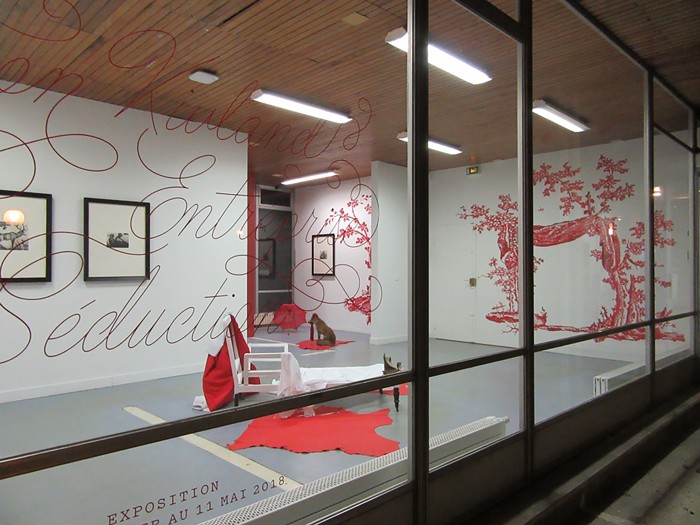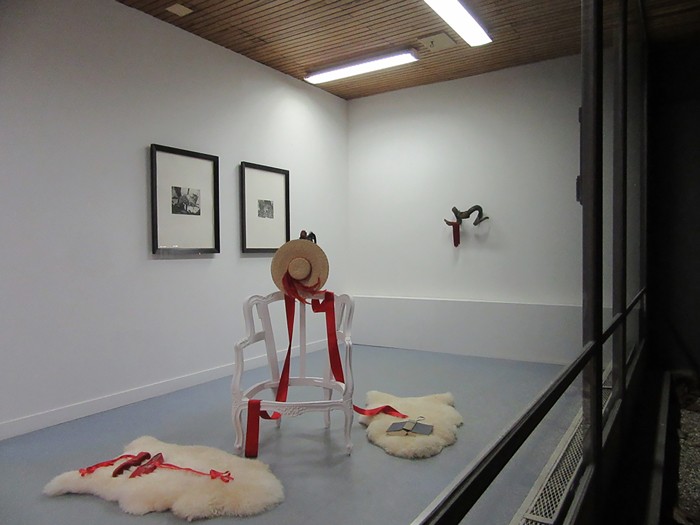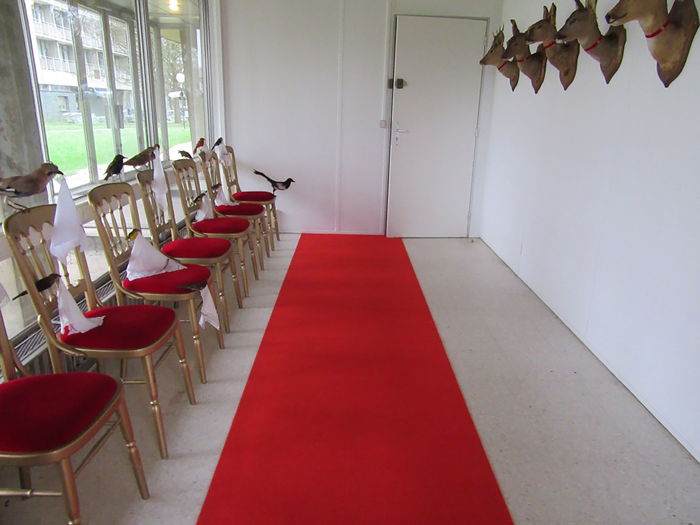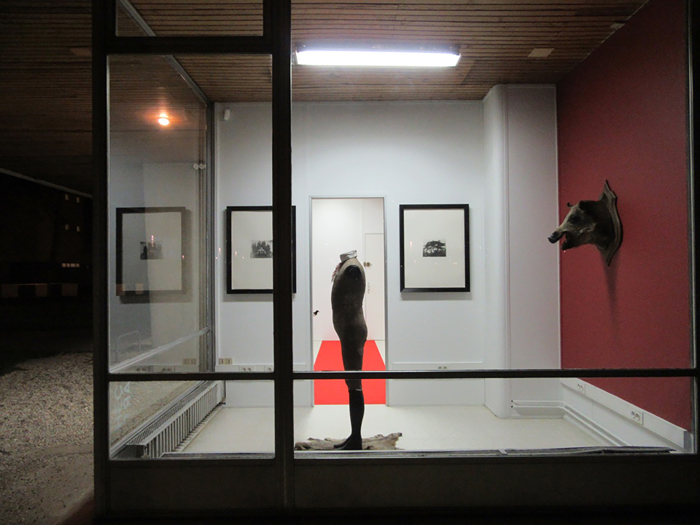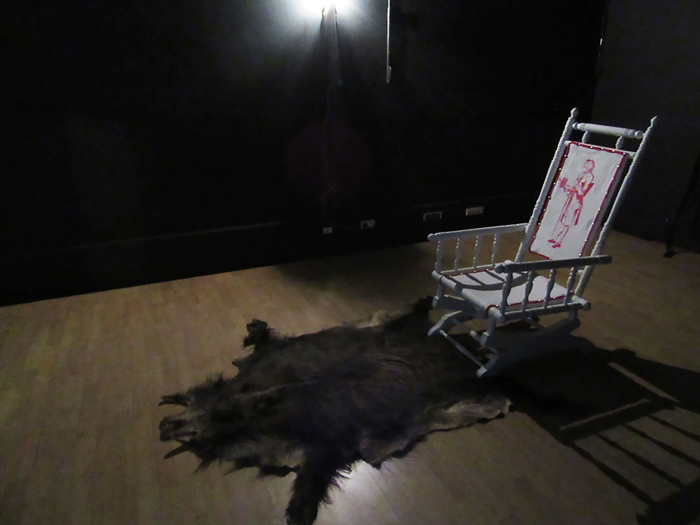ENTREPRISE DE SÉDUCTION address the complex relations between desire and consumption under capitalism, reconceptualised as the capture and remoulding of desire, figured in the fabrics of Jouy.
The exhibition is composed of five tableaux, each incorporating similar elements in different forms: skin, furniture, image/s, naturalised creatures, and a handmade object or objects, made by skilled producers, and a reference drawn from the Manufacture Oberkampf in Jouy, each element listed in the voiceover of the film, reading the cargo lists of slave ships. The Manufacture’s activity spans early industrial development in pre-revolutionary France to its closure in 1843; the end of the Empire marks its decline. The factory displayed the conditions of production of the transition to what E. P. Thompson calls ‘industrial capitalism’, in the changes in techniques of manufacture that demand greater synchronisation of labour and increasing exactitude in time-routines, and in how these changes are lived through. A ‘factory system’ and a ‘domestic system’ overlap. Noted for the ‘benevolent’ factory conditions, the pastoral and political images of the printed cloth it produced, its concealed relation to the colonial enterprise of slavery is exposed in the final tableau. Two figures set the boundaries, Rousseau and Robespierre, present as corpses: the tomb of the former, as an etching derived from a toile de Jouy, the latter as the cadaver of a headless mannequin. The works are conceived as objects with visual literacy and material agency, the exhibition as a model and event making social relations tangible; in the process, becoming a space for political action. Following three intensive periods of research in the Musée de Toile de Jouy, in the Archives Nationales, and working with specialised collaborators, the project developed as an exhibition and discursive site of encounter at the heart of the largest business school in Europe, the HEC.

